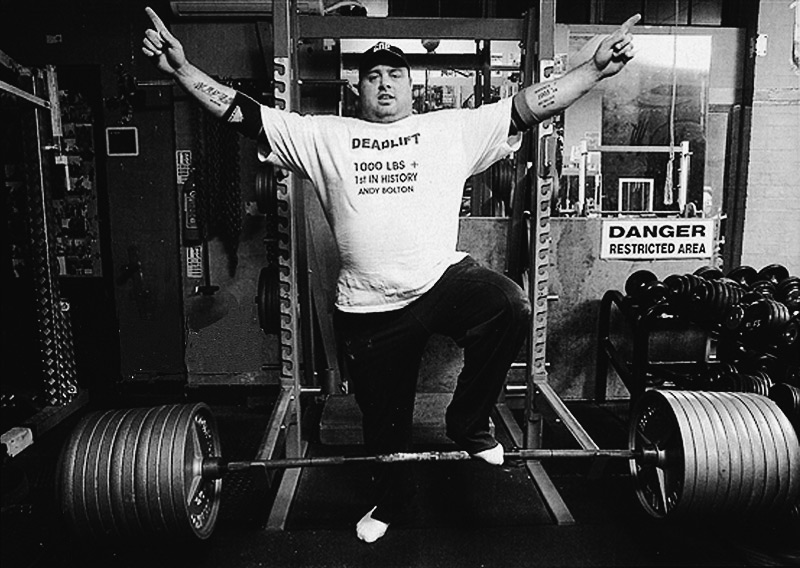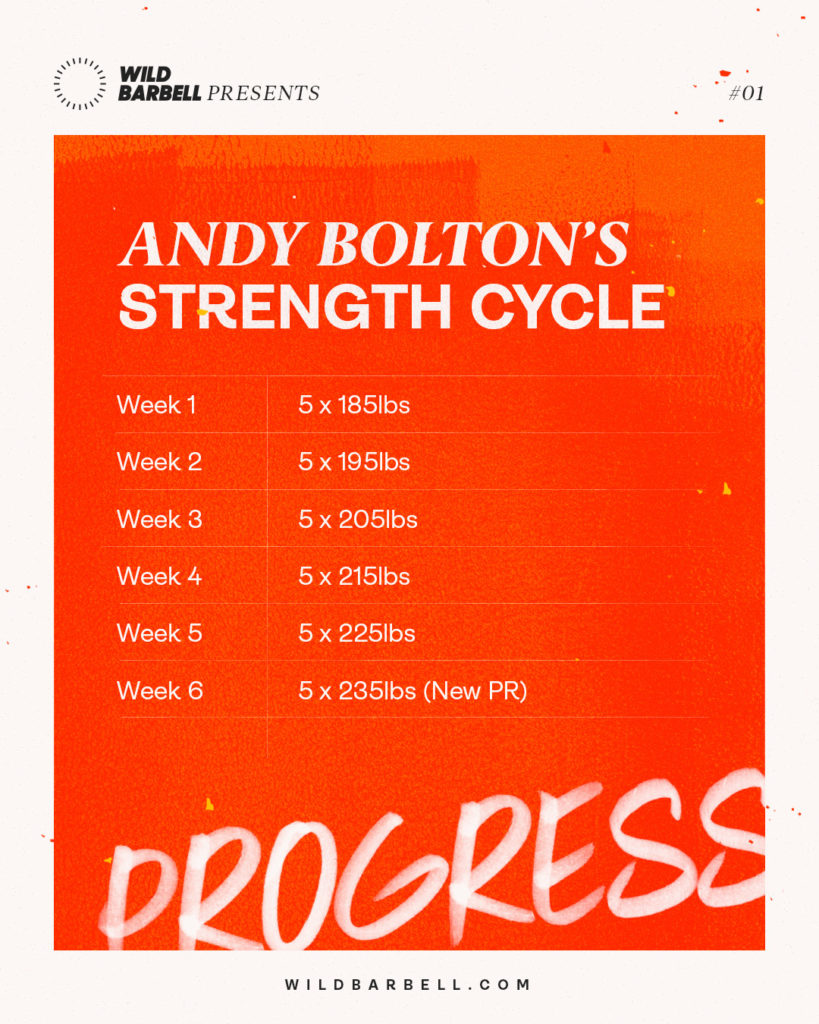Notes
Andy Bolton Cycling: A strategy for steady strength gains
In this instalment I wanted to share one of the ideas I wish I knew in my first year lifting. It’s straightforward and deals with challenges faced after the novice phase. Here it is. Enjoy.
“A Simple and highly effective way to add pounds to your deadlift (and squat, bench and military press if you care for those lifts too).”
– Andy Bolton

Andy Bolton is a powerlifter and strength coach. He is most known as the first man to deadlift 1,000lbs. In his book Dynamite Deadlift he introduces this idea he calls cycling. He describes it like this:
“Cycling is a way of structuring your training program. For any given training cycle that you perform that uses the cycling approach, you will start out lifting moderate weights and finish lifting heavy weights (hopefully personal bests).”

Here is one example
Week 1: 185lbs x 5
Week 2: 195lbs x 5
Week 3: 205lbs x 5
Week 4 215lbs x 5
Week 5: 225lbs x 5
Week 6: 235lbs x 5 (end with a solid 10lbs PR)
In his book he goes through in more detail of how to set up cycles for novices, intermediate and advanced. The book is fantastic so please buy a copy on amazon if you want to get all the details.
I love this concept as it addresses 3 key problems.
1. Manages unrealistic expectations
There’s a real kick when you start lifting and each session you’re getting better. You might be lifting a little more weight or doing more reps each week. Then it happens….results stop coming. It’s like the world has gone into slow-mo. And it can be disheartening and frustrating how much slower and harder it is to make progress. If you are like me and experience this then you might have an expectation vs reality gap. This approach focuses on improving every cycle instead of every week. This is a far more realistic mindset. Cycling keeps you motivated and gives a target to hit personal bests every 6 weeks.
2. It has recovery built in
“This method stops you from burning out”
Going back to lighter weights gives you physical and mental reset. Many lifters don’t like taking weight off the bar as it feels like a regression.
In his setup it feels less like a regression and more like a run up to an even bigger total. It’s a small distinction but it can be a more motivating approach to those that don’t like reducing weight.
3. He encourages experimentation to figure out YOUR cycles
“Instead of choosing one program and focusing on using it, and really getting to understand it, they jump from one program to another; never sticking to any one training methodology for more than a few weeks.”
To add to his point, each person is a little different. It takes trial and error to figure out the week to week jumps. For example a 5kg or 2.5% jump in load each week might work for one person but not another.
And that’s cycling by Andy Bolton. Try it and let me know how it went. If you want to know more about it grab his book Dynamite Deadlift.
Collection of programs
Find a lifting program that meets your lifestyle